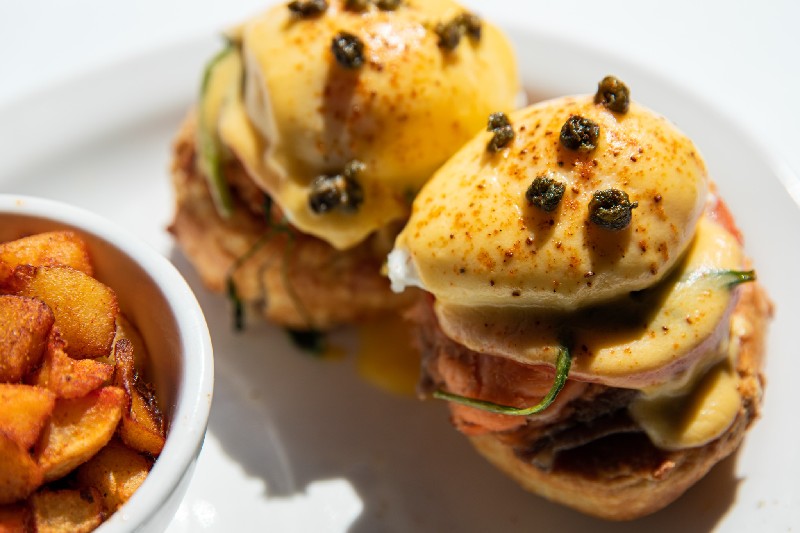
As Chef Joey Maggiore of the Arizona Brunch restaurant chain Hash Kitchen said, “Perfecting hollandaise is not necessarily the hardest, but it is a less forgiving sauce. You must pay attention to detail when making hollandaise so that you get the consistency and taste you need for the perfect sauce.” Chef Maggiore couldn’t be more spot on. Hollandaise is one of the five mother sauces, meaning, it’s the base sauce for other, more complex sauces like béarnaise, choron, and maltaise sauces.
Before the technological age of blenders, the old-school method of making the perfect hollandaise sauce took some practice. But now, with technology, there are more foolproof ways to make the mother sauce. We’ll cover all those methods, plus give you some of Chef Maggiore’s tips and tricks on how to make hollandaise sauce. Also, stick around until the end for an easy hollandaise sauce recipe.
Hollandaise sauce ingredients
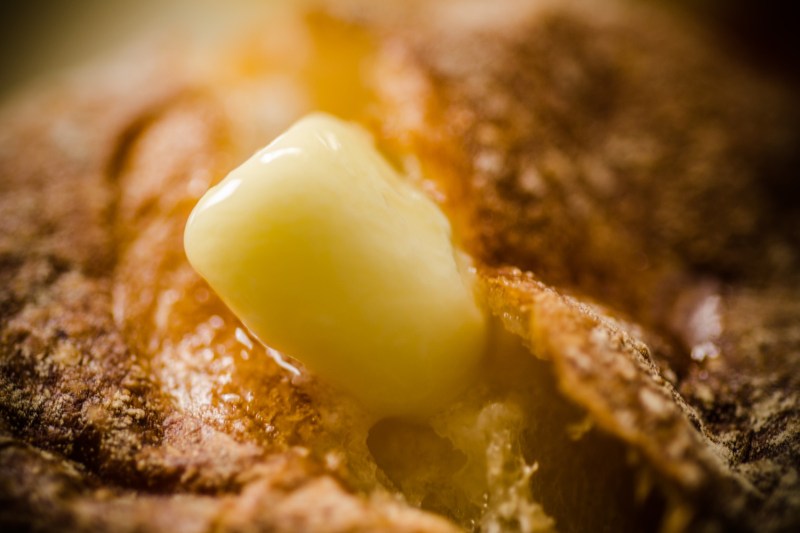
The ingredients of classic hollandaise sauce boil down to only four main components. First, you have melted butter. To really respect the traditional French recipe, you’ll need to clarify the butter by straining out the whiter, more opaque milk solids, leaving pure butterfat. However, this step is optional and is left out of many recipes because most people will never taste the difference.
Next, you have eggs. You’ll only be using the yolks. So save those egg whites for a nice omelet to use with any leftover hollandaise. Acid is the third key ingredient. Most chefs prefer lemon juice for this step because it adds a delicately sweet flavor to the sauce. However, if you are out of lemons, you can always use white or champagne vinegar. Sometimes, equal parts water and juice/vinegar are used in this step. However, if a recipe calls for water, we like to bump up the amount of juice or vinegar for added flavor.
Lastly, you need just a pinch of salt and cayenne pepper. Some people like to sub out paprika for the cayenne, which is fine. The primary purpose of the pepper is not for heat but to enhance the flavors of all the other ingredients.
Traditional method of making hollandaise sauce
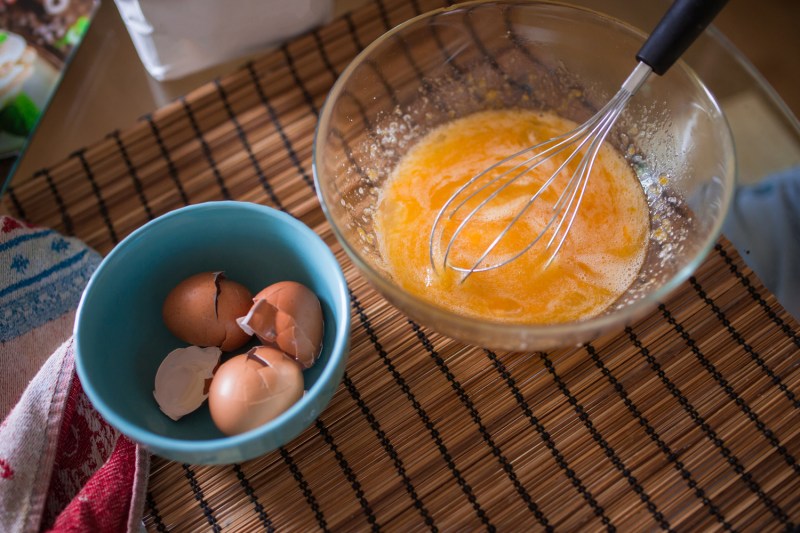
Before blenders, you had only one option, and that was the double-boiler method. When making hollandaise this way, you’ll bring water in a medium saucepan to a low boil — just enough to create some steam. In a steel or glass bowl (though we prefer glass because it doesn’t get as hot as quickly as steel), you’ll continuously whisk the eggs and juice/vinegar with the bowl inside of the saucepan with the simmering water. Be sure that the bowl is larger than the diameter of the pan so that it doesn’t dip in and touch the water.
Once you’ve whisked for a while, you’ll drizzle in your hot butter (while still whisking furiously). If you don’t whisk enough, the eggs won’t take the butter, and the sauce will break. Using a thin piano or balloon whisk helps significantly in blending the ingredients.
If, at any point during this process, your mixture starts to resemble the beginnings of scrambled eggs, remove the bowl from the steaming saucepan immediately, but continue to whisk. The end result should be a perfectly golden, creamy, velvety sauce that sticks to a spoon. If it’s a little chunky, that means you cooked the eggs a bit too much. This doesn’t mean the sauce is worthless. The flavor is still there; it just won’t present as well on whatever dish you’re serving it with. It’s why we say this method of making hollandaise takes some practice.
Foolproof way to make hollandaise sauce
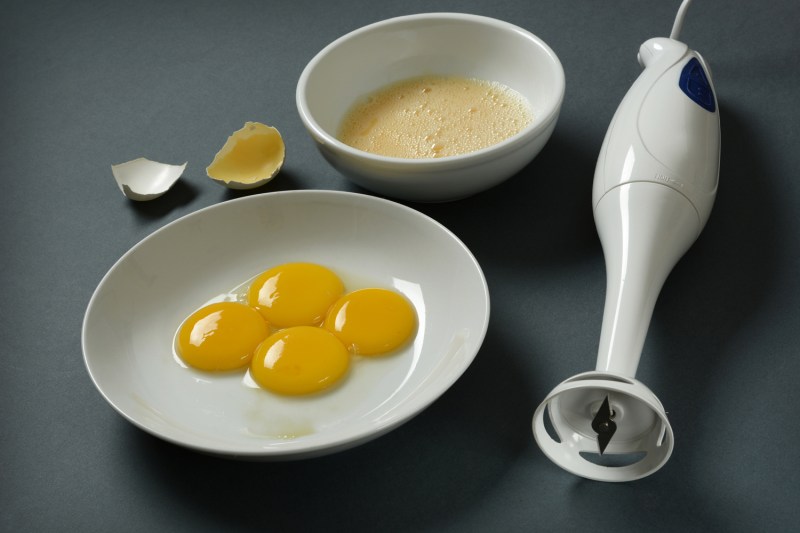
Technology makes all aspects of our lives easier (as long as you keep up with it), and cooking is no exception. Chef Maggiore turned us on to the hand blender method of making hollandaise sauce which will almost always turn out perfect and in way less time.
“I prefer to use a hand blender. This way, you won’t get tired, and it makes the sauce way more forgiving. Using a hand blender means the sauce is less likely to break, too, which is always a plus when it comes to perfecting any creamy sauce.”
With the hand (immersion) blender method, you use all the same ingredients; the only thing that changes is the tools. You’ll need a hand blender, a blending cup or small pitcher (something with tall sides to surround the neck of the hand blender), and a small saucepan to melt your butter. You can even melt your butter in a glass measuring cup in the microwave. The crucial thing is to make sure your butter is hot enough to cook the eggs on its own (around 220 degrees Fahrenheit).
Put all your ingredients in the blending cup and insert your blender so the head is flush with the bottom of the cup. Blend on med/high for a few seconds. Then, slowly drizzle in the butter (you’ll need good aim for this step because the space between the lip of the bowl and the blender is narrow). You’ll notice the sauce quickly thicken as the butter is added and the eggs cook. Blend until smooth, and you’re done. Using this method, you’d find your arm to be less tired, and your sauce will rarely break or overcook.
You can also convert the hand blender method to a stand blender. Make sure that if you’re using a regular blender, you start your machine at a very low speed. When making hollandaise in a blender, the main problem is that if you start it on too high of a speed, the eggs can splash to the sides of the blending pitcher before the butter is added. Having uncooked egg residue within the blender can be a health safety risk. That’s why many chefs prefer a hand blender. The blade is smaller, so you can start it out at lower speeds, and you’re working in a smaller vessel with less risk of egg splashing around.
Hollandaise sauce recipe
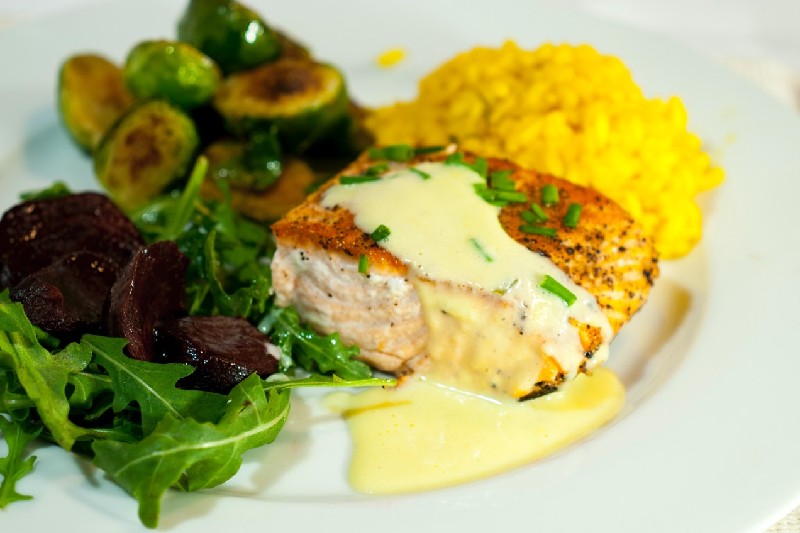
This is a standard hollandaise recipe. The great thing about hollandaise is you can get creative with it. You can add some tomato puree for a choron sauce or spice it up by folding in some green chili sauce. Hash Kitchen does both to bring some versatility to their dishes.
Ingredients
- 1 1/2 sticks of butter heated to 220 degrees Fahrenheit and milk solids skimmed from the top (clarified)
- 3 large egg yolks
- 1 tablespoon of lemon juice
- Pinch of salt
- Pinch of cayenne pepper
Method
- Add all ingredients except the butter to a blending cup or small pitcher.
- Place the hand blender flush to the bottom of the cup and blend ingredients on medium speed for 30 seconds to one minute.
- Slowly drizzle the butter into the mixture until fully incorporated.
- Serve immediately.
Ways to change up the classic hollandaise sauce recipe
Want to give the classic recipe a twist? Here are some ideas to change it up and to get some unique flavors in your mouth.
- Herb-infused hollandaise sauce: Add chopped fresh herbs like chives, tarragon, or dill to the finished sauce for a pop of flavor.
- Spicy hollandaise sauce: Add a few drops of Sriracha to the sauce while whisking with the melted butter for a kick.
- Citrus twist hollandaise sauce: Substitute lime juice or orange juice for some of the lemon juice for a different citrus flavor.
- Avocado hollandaise sauce: Blend half an avocado with the egg yolks and lemon juice before whisking over heat for a creamy and rich sauce.
- Cheesy hollandaise sauce: Whisk in a tablespoon of grated Parmesan cheese or crumbled goat cheese for a savory twist.
What do you serve with hollandaise sauce?

The classic hollandaise sauce dish and also the most popular, is eggs Benedict. However, there are tons of things that pair well with a buttery hollandaise. Salmon and other fatty fish always go great with hollandaise. Stemmed vegetables like asparagus, broccoli, and cauliflower are all well complemented with this sauce. A quick hollandaise sauce can also liven up less expensive cuts of steak or ham.
Editors' Recommendations
- The best fried chicken recipe you will ever make
- The secret to gauging meat tenderness is easier than you think
- How to grill the steak of your dreams: An aspiring steak master’s guide
- This is the best wood for grilling and smoking, according to an expert
- How to make a Dark and Stormy, the rum-centric sibling of the Moscow Mule



